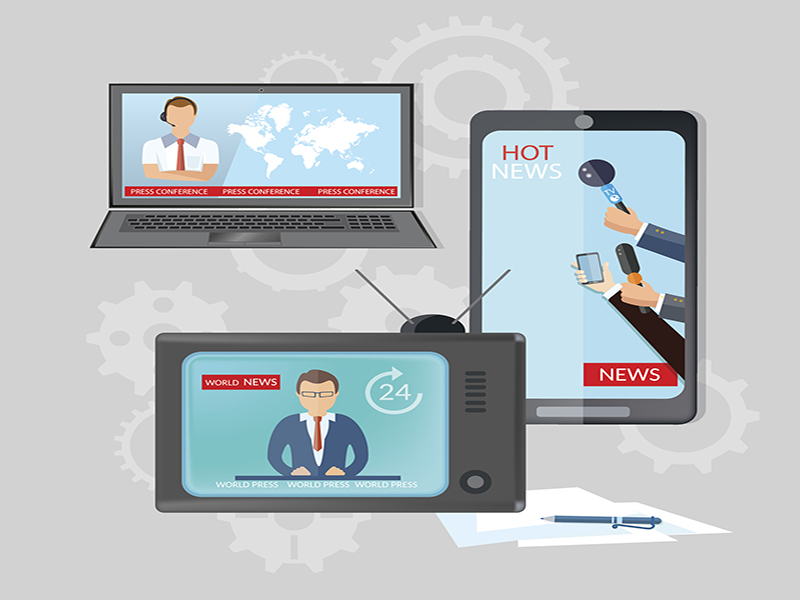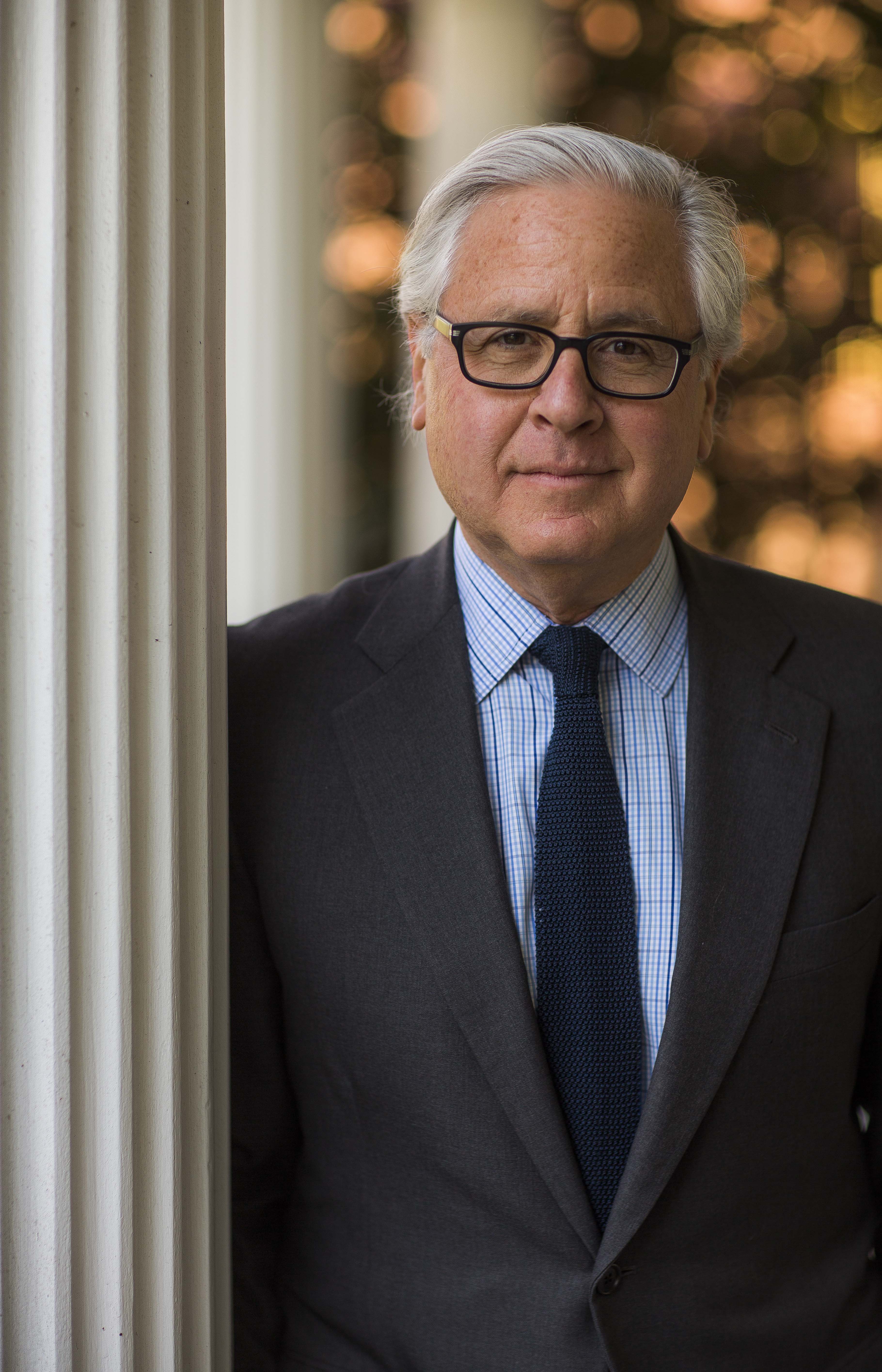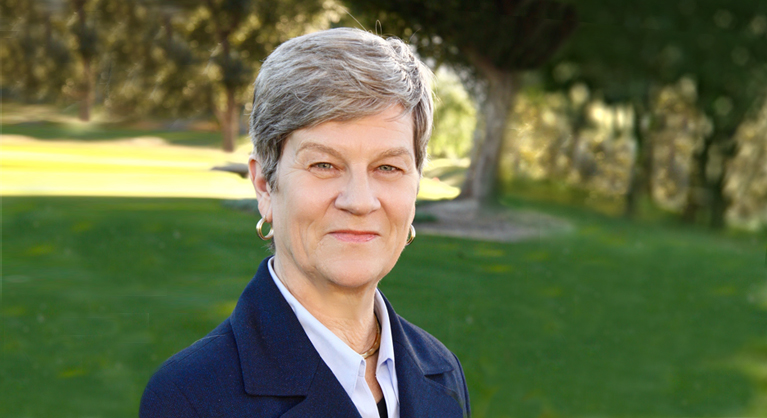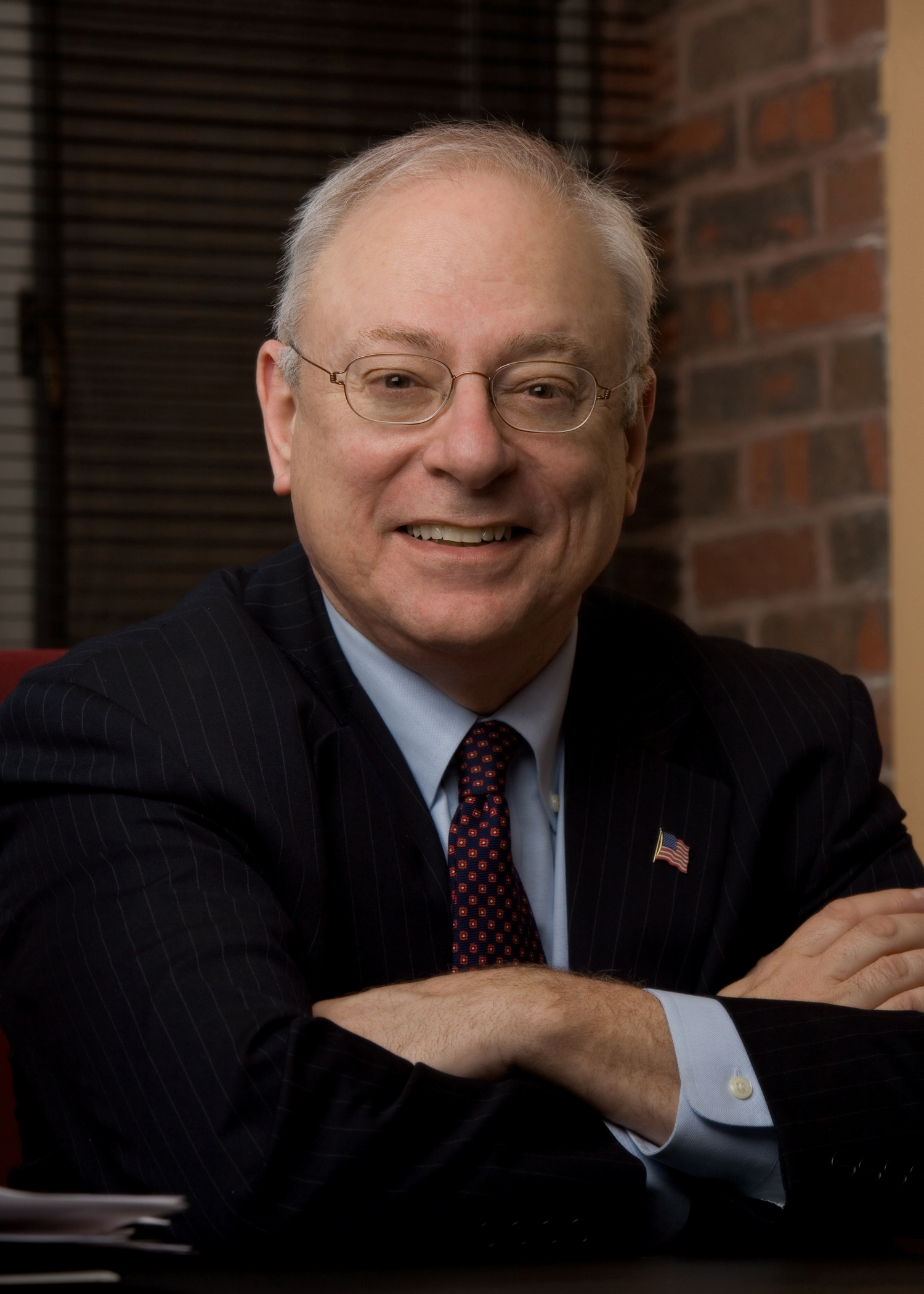
That a president would influence political communications is not a unique phenomenon.
In the 1910s, President Woodrow Wilson, before the dawn of mainstream television, hosted the first presidential press conference, making reporters scramble to give readers a rundown of what he said; in the 1930s, President Franklin Roosevelt introduced the fireside chat through radio; and President John F. Kennedy, dazzler-in-chief with his humor and good looks, brought the broadcast press conference to the household in the ’60s—live, unfiltered, with no editing from the press.
It’s this same media-circumventing tact that President Donald Trump has employed since his heel hit the escalator in 2015—if not upending political communications, then at least changing the face of it.
“Donald Trump is, to some extent, in that league,” says Alvin Felzenberg, a presidential historian, Annenberg School for Communication lecturer, and former principal spokesman for the 9/11 Commission, “of finding a way around the gatekeeper.”
Political communication during the Trump presidency, thus far, has been a dizzying experience—whether through the lens of media consumption, journalism, or public relations. And while not all changes in communication have been triggered by President Trump’s unconventional approach, what’s significant is his eagerness to take the driver’s seat during a time when political communications was already ripe for change.
“I think politics and political communication had already changed by the time Donald Trump declared his candidacy. The tools were all there,” says Howard Fineman, a lecturer at Annenberg who teaches the spring-semester seminar “New Media Journalism and Politics in the Trump Era.” “But I think what’s different is his aggressive use of it in all forms. And the fact that so much of his presidency itself, so much of politics is now, thanks to him, totally conducted in the media in general—and in digital media and social media, in particular.”
Those social media tools give a megaphone to people who otherwise did not have one, providing, on one hand, opportunity for marginalized voices to be heard, but also for outliers who would previously be filtered out.
“You’ve got the vehicle now, and you didn’t before,” says Kathleen Hall Jamieson, director of the Annenberg Public Policy Center and a professor of communication, speaking to how mediums like Twitter can sometimes be weaponized for political communication. “Before you had social media, the capacity of an individual to reach a larger audience was minimal. There are things you used to only see on bathroom stalls that you now see people posting online.
“We’ve changed the capacity of individuals to have their messages amplified.”
Partly because of that exposure of previously unheard voices, in conjunction with partisan news consumption, socio-political norms that were rarely breached—or breached only for the purpose of social justice, says Jamieson—are now broken more often, meaning that productive deliberation has become more challenging.
In practice, it’s put pressure on conservative politicians to express themselves in a way that accepts a policy while rejecting norm-breaking, the destruction of political decorum.
“If we had to say, ‘Where is the place we’re going to find the community-building solution?’ It’s people who accept policies of his, or substantial parts of his policy agenda, but nonetheless are still able to disapprove—and clearly do—when he breaches the norms of civil discourse,” Jamieson says.
All the while, Jamieson is clear about one point: fundamental theories of communication—the two-step flow process, contagion, etc.—still apply. They’re just “happening some place we hadn’t seen before, because it hadn’t been invented before,” she says.
In other words, information still flows from opinion leaders to opinion followers, but who those opinion leaders are capable of being, by way of platforms like Twitter, has broadened. Too, how we get news—and its sheer abundance—has changed the ballgame.
Annenberg communication students, meanwhile, are well aware—painfully so, even—of how the political communication landscape has evolved.
Benjamin Friedman, a rising senior majoring in communication and political science, who interned with the Democratic National Committee last summer, and is interning with a progressive advocacy group this summer, says the increasingly rapid-fire news pace has made him constantly aware of the news cycle, ready to attach his messaging to the topic of the day—a lofty goal, as the topics can change by the hour.
“I’m constantly scanning news for what’s happening; it’s a tough task, and I’m not going to lie, it’s exhausting,” Friedman says. “Having to look through the news so often, it’s hard to even know what the main issue is.”
Still, he emphasizes, the challenges presented have only increased his interest in a career in political communication. He feels encouraged to find clever ways to get his organization’s message out. Using, for example, memes—testing them in online communities in the same way a professional might have tested speeches before, he says. All in a big-picture attempt to “meet people where they are.”
But not every communication student is as optimistic.
“I got into [political communication] really wanting to go into politics, work The Hill, the whole thing. But I think I’ve been a little exhausted by what’s going on,” says Ariel Goldfine, a rising senior and double major in political science and communication, with a concentration in communication and public service. “My interest has wavered a little bit.”
She echoes the sentiment that, from a communications standpoint, she’s on her phone constantly, watching the news cycle, and often on standby for President Trump’s 6 a.m. tweets.
The stream of shock-and-awe moments in political communications lately, she adds, has even influenced some of her communications courses.
“They’ve become much more like, ‘Let’s talk about what happened last week,’” she says, laughing.
Thinking about the before-and-after effects of pre- and post-2016 political communication, she says the struggle to find a focused narrative is the biggest change she’s witnessed in her work.
“It’s almost like it’s impossible to have a salient story,” she says. “I can’t point to a through-thread running through the Trump presidency that people can follow and cling to. There are millions of different scandals and stories people cling to, but everything wrong with the Clinton campaign—on the right, you’d point to it as a corruption narrative, whether it’s the emails, or the server, or the foundation, it all came to the same narrative.
“I feel like now I can’t keep track of all the things going on.”
Still, there is reason to be optimistic. As bleak as these political times seem, Jamieson says, she’s heartened that both the left and right have defended the judiciary when it’s attacked, and, encouragingly, local communities prove there is still productive dialogue to be had.
“There’s still a capacity to deliberate,” she says. “We certainly do it in our families, we do it in our classrooms, students do it when they’re engaged with other students on a project and don’t agree about how to execute it. It’s alive and well, and the question is, ‘How do we increase constructive engagement in the polarized national arena?’”
Ultimately, Jamieson concludes, it’s “just something we’re going through.”
“There’s always the tendency to catastrophize moments in history: ‘This is the best,’ or ‘This is the worst,’” she says. “Those are rarely true.”
Below, Penn professors offer insights on some remarkable differences in political communication in the age of President Trump and the advent of social media.
What Penn professors note as remarkable shifts in political communication:
• The “breaking away” of cable news. “I say breaking away because cable news is entertainment and, therefore, it’s a ratings game,” says Felzenberg, noting that, once upon a time, networks strictly relied on apolitical shows like “I Love Lucy” to carry entertainment. “CBS and NBC didn’t [used to] care whether the news made money or not. They gave us a half hour of news in the ’50s [and beyond], and that was it.” Now, he explains, news is the product—and President Trump is an enticing one.
• Previous presidential campaigns used social media as a “supplement,” President Trump used it as a primary tool. Though President Barack Obama standardized social media’s integration into major political campaigns, says Fineman, he—and, to a lesser extent, President George W. Bush in 2004—ultimately used social media and the internet at-large as an organizing tool. President Trump used it as a messaging one. “[Previous campaigns] were using it to integrate into the existing system. Donald Trump turned that all upside down in 2016 by basically starting and running all his advertising—a lot of his voter outreach and messaging and essentially his stump speeches—primarily on the web,” he says. “With Twitter as the point of the lance.”
• Agenda-setting is gone. Though not a President Trump-led change in communication, Jamieson notably observes that students “are now living in a world in which they are online constantly.” Because of that, the news environment is no longer consumed by everyone at the same time slot every evening, and all environments become news environments. “It is changing not only the way in which they consume news, but changing the kinds of news they consume,” she adds. “The danger of this consumption pattern is losing the understanding that comes from engagement with alternative points of view and with the evidence supporting them.”
• Politics as “pure combat.” “The [Trump] effect on politics is to make it rougher, cruder, more combative, less tethered to any semblance of truth, shallow, superficial, and all about victory and strength—or, at least, the image thereof,” says Fineman. It’s the basically written structure of his tweets that make them so effective, he adds. “I suppose if Donald Trump could figure out a way to give the State of the Union in emojis, he would.”
• The decline of political decorum. “We’re always going to have extreme rhetoric on the left or right, and ‘Will the people on the right condemn the rhetoric when it’s extreme on the right, and will the people on the left condemn the rhetoric when it’s extreme on the left?’” says Jamieson. “And the point at which they stop doing that, we have to worry. Because the policing of discourse is most powerful when it comes from your own side.” For example, conservatives defending Robert Mueller, or the occasion in which House Democratic Leader Nancy Pelosi put out a statement against Rep. Maxine Waters’ insistence that Trump administration officials not be welcome in public spaces.
• The “rope-a-dope” tactic. Felzenberg cites this as what President Trump employs to deploy new narratives into the media cycle when he’s displeased with the current one—not necessarily a new tactic in political communications, but one that’s shapeshifted with how the president uses every tweet as a means to almost instantaneously reset the news cycle. He tweets, and cable news scrambles. “It’s like watching 7-year-olds play soccer,” he says. “They all go for the ball at the same time and knock their heads together.”
• Media is even more partisan. “People get so enclaved inside their own media sphere that they begin to think the rhetoric of a single individual is typical of a whole body of ideological discourse, when it is not,” Jamieson says. A study conducted by Annenberg, in fact, found that conservative-leaning respondents thought liberals often analogized Wisconsin Governor Scott Walker to Adolf Hitler; similarly, many liberal-leaning respondents thought conservatives generally compared President Obama to Adolf Hitler. Reality was that those notions came from one sign at each of two protests, magnified by social media and over-generalized. “You then make that typical of the ideology on the other side, when none of those inferences were accurate,” she explains. “When you think these things are common and pervasive and tied to the other side, it makes it less likely you’re going to communicate with those who disagree with you because now you’ve identified them with problematic behavior… over what is bad media reporting inside an enclaved, highly partisan world.”
• Media literacy has decreased. In a fall course, “Journalism of Social Change,” Fineman hopes to promote an understanding of the power of good journalism—often undermined by the Trump Administration—by teaching examples of it. The larger point is that media literacy needs to be part of a standard liberal arts education. “Everybody needs educated about what good journalism is, how to consume it, understanding the machinery that produces the modern political conversation,” he says. “You have to know how Facebook works, sophistication about how they order things—how Google works, how websites work and their political orientation. Never before has education in how journalism is conducted been more important.”
• National news is disproportionately prioritized. “We’re in this funny space in which Donald Trump is in people’s heads for much more time than he should be, given how much effect we can have on anything he does,” Jamieson says. The challenge, then, might be for local media outlets to find a way to break through. “If you want to spend a lot of time thinking about something, think about your community,” she says, “where your action can actually make a difference.”










